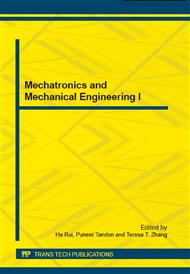p.250
p.254
p.263
p.268
p.274
p.279
p.284
p.288
p.293
Optical Computer Mouse Referenced Calibration of an Inertial Measurement Unit for Use in Unmanned Underwater Vehicles
Abstract:
In this study an inertial measurement unit (IMU) used in unmanned underwater vehicles has been taken into consideration.The main objective of this study is to improvethe measurements obtained from an IMU used in the position detection by minimizing the effect of its static and dynamic errors on the output. To enhance the IMU data optical computer mouse (OCM) is proposed as calibrator. The data received from the OCM is used to train an artificial neural network (ANN) which would improve the IMU outputs by trying to estimate the reference data from the actual sensor outputs. The ANN performance is compared with that of classic low pass filtering methods to provide a relative performance criterion. The ANN trained with OCM data has given satisfactory results. During the training of ANNs the effects of several parameters such as neural network architecture, activation functions, training algorithm, layer and cell number have been investigated. Thus, the results, findings and insights obtained in this study can be applied in research areas where this kind of nonlinear estimators are used.
Info:
Periodical:
Pages:
274-278
Citation:
Online since:
October 2014
Authors:
Price:
Сopyright:
© 2014 Trans Tech Publications Ltd. All Rights Reserved
Share:
Citation:


